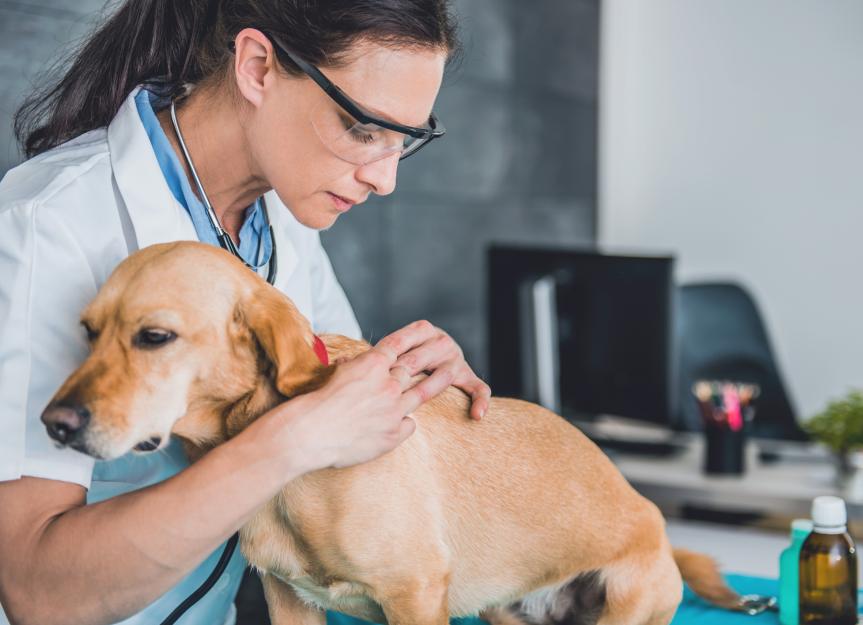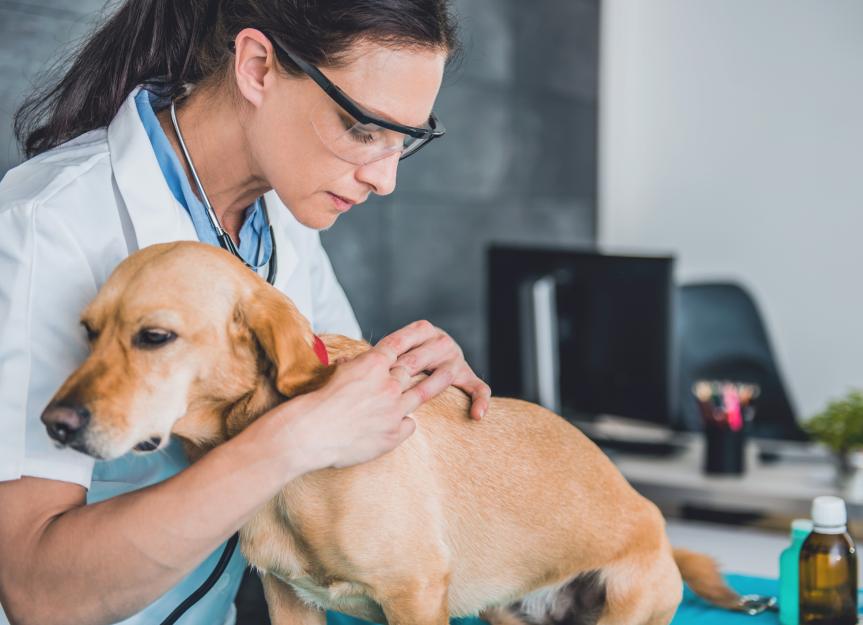
Imagine as you’re petting your dog, you run your hand over a soft lump just underneath the skin that you hadn’t felt before. Naturally you’d be concerned and wonder what it could be. Fortunately, many times these lumps are harmless clumps of fat called lipomas.
Lipomas in dogs are very common, and most dogs develop at least one during their lifetime.
Simple lipomas generally grow slowly and typically don’t require any treatment; however, sometimes surgery may be recommended if they are affecting a dog’s quality of life due to their location or size.
Key Takeaways
- Lipomas are common, non-cancerous fat lumps in dogs that typically grow slowly and don’t require treatment unless they affect mobility or comfort.
- Diagnosis is confirmed through tests like fine needle aspirate or biopsy to rule out more serious conditions.
- While most lipomas don’t need removal, surgery may be recommended for large or problematic lumps, especially infiltrative types that invade surrounding tissue.
What Is a Lipoma in Dogs?
Lipomas are non-cancerous lumps of fat cells that develop underneath the dog’s skin.
They typically grow slowly and can be found virtually anywhere there is fat present in the dog. The most common places lipomas are found are the chest, flank, limbs, abdomen, and back.
They feel soft to the touch and are freely movable underneath the skin where they are located.
Lipomas grow slowly and are non-cancerous, so they don’t always need to be removed.
In contrast, a less common form called infiltrative lipomas may feel firmer and be less easily moved.
Lipomas are generally not medical emergencies; however, there are a few instances where these lumps may necessitate immediate veterinary attention.
The dog should be seen promptly if a lipoma grows large enough to interfere with mobility or breathing, if the lipoma grows quickly, if the lump is causing the dog significant discomfort, or if the lump begins leaking blood or pus.
Anytime you notice a new lump on your dog, it’s important to schedule a veterinary appointment at your earliest convenience so that a veterinarian can accurately diagnose the lump and rule out other serious conditions, such as cancer or infection.
Symptoms of a Lipoma in Dogs
The main symptoms of a lipoma in dogs may include:
Because lipomas generally do not cause any pain or discomfort, there are usually not many symptoms of this condition aside from the obvious lump underneath the skin.
If the lump grows very large, a dog could have trouble walking or breathing depending on the lump location.
Causes of a Lipoma in Dogs
The exact cause of lipomas is unknown. However, it’s suspected that lipomas in dogs may have contributing factors, which include:
-
Old age. While any dog can develop lipomas, they are significantly more common in dogs who are least seven years old.
-
Reproductive status. Spayed and neutered dogs are more commonly affected by lipomas, compared with those who have not had those procedures.
How Veterinarians Diagnose a Lipoma in Dogs
The veterinarian will start with a thorough physical exam, paying special attention to all areas of the dog’s skin.
She will manually feel all along the dog’s torso and limbs to detect any lumps and bumps. If a lump is found, additional testing may be done, which can include:
-
Fine needle aspirate (FNA). A veterinarian uses a small needle to gently poke the lump and collect a sample of cells. This sample is added to a glass slide and then stained with dye to highlight the cells when looking under a microscope.
Once a diagnosis is made, treatment options can be discussed with a veterinarian.
Treatment of a Lipoma in Dogs
Generally, simple lipomas in dogs do not require any treatment.
However, if the lipoma is in an undesirable location where it is affecting the dog’s ability to walk, for example, surgery is likely to be recommended.
Surgical removal is generally curative for simple lipomas as soon as the surgery is complete; they don’t usually recur.
Additional lipomas can always develop in new locations throughout the body, however.
Infiltrative lipomas generally require surgery and they may recur. It’s more difficult to remove the entire lump due to their tendency to infiltrate surrounding tissue. This is also why additional treatments, such as radiation therapy, may be required for these more aggressive lumps.
Recovery and Management of a Lipoma in Dogs
If surgery is recommended to remove the lipoma in dogs, recovery time is generally seven to 10 days.
A cone is usually needed to prevent your dog from chewing the surgical area while it heals.
Dogs who do not undergo surgery should be monitored for any changes in the size or appearance of the lipoma, such as rapid growth or leaking of blood or pus that may warrant prompt veterinary attention.
Prevention of a Lipoma in Dogs
Because it’s not known exactly what causes lipomas in dogs, it’s difficult to prevent them.
However, because overweight dogs have an increased likelihood of developing lipomas, pet parents can ensure their dogs remain in the optimal range for weight by feeding them a high-quality diet, such as Purina Pro Plan Shredded Blend in appropriate meal portions.
Encouraging regular exercise can also help maintain a healthy weight.
Keeping your dog up to date on regular wellness care by a veterinarian is important. These visits can help to detect skin lumps early, so they can be accurately diagnosed and monitored.
Lipoma in Dogs FAQs
Should lipomas in dogs be removed?
Lipomas grow slowly and are non-cancerous, so they don’t always need to be removed.
However, if the lipoma is on an area of the body that makes walking difficult or interferes with normal breathing, it should be removed.
Always follow your veterinarian’s recommendation when it comes to lipoma removal.
How do you get rid of lipomas on dogs at home?
There are no home remedies to get rid of lipomas.
If you notice a lump on your dog, you should bring him to the veterinarian for assessment and to receive professional guidance.
How can you tell if a dog’s lipoma is cancerous?
The only way to tell whether a lump on your dog is cancerous is to see a veterinary for testing.
She can take a sample of the lump and provide an accurate diagnosis.
Can lipomas shrink on their own dog?
Lipomas don’t generally shrink but continue to grow slowly over time.



